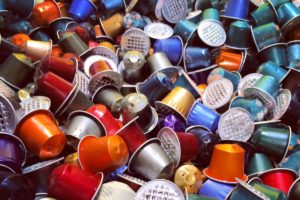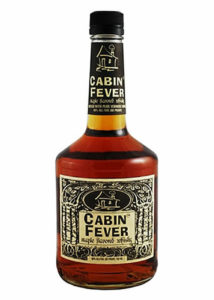Well, the response was loud and clear and almost instantaneous. I simply had to whisper about a serious competitive coffee capsule situation, and the problem was solved! Yesterday Migros announced that it has invented the coffee ball!
They look like those round Lindor chocolates the melt in the mouth. But instead of hard chocolate surrounding soft, they are made of an invisible compostable material that surrounds ground coffee beans.
Of course, you have to buy a special machine to squish the balls and extract the coffee flavour, but then you just scrape the little sacks of coffee grounds out of the machine and put them directly in the compost. No drippy trips to the post office or the recycling bin.
No prices are available yet, but this exciting new product is coming to a store near you SOON! Just in time for Christmas!
Back in the day in our manses in the Canadian countryside, we didn’t know there was any kind of coffee except instant. Tea, stewed in a glass pot, was the drink of choice.
 Black and white cowboy movies brought us into the world of cowboy coffee where water and strong and gritty coffee were boiled over a campfire. A Stetson, a guitar and a tin cup were additional props in this exciting and adventurous world.
Black and white cowboy movies brought us into the world of cowboy coffee where water and strong and gritty coffee were boiled over a campfire. A Stetson, a guitar and a tin cup were additional props in this exciting and adventurous world.
Childhood forays into other houses, revealed divergent coffee universes. There was percolated coffee where the machine stood on its own little heating pad and stayed warm the whole day. Those kitchens smelled strong and specific.
A Dutch friend’s mother (beside her meat mincer attached with a vice to the kitchen counter) had a coffee pot with a plunger she pressed and the water magically changed colour. She had huge strong arms and her dangerous kitchen was my absolute favourite.
Later on into the adult world of coffee production, there were the paper filters holding the ground coffee that you poured hot water over, and the timeless Italian Moka coffee pots. Then came the fiddly coffee capsules and their specific machines. The world was full of narrowing possibilities.
Anyway, the new coffee ball method has been brewing for the past five years, and Migros claims to have the competition shaking in their aluminum coffee-capsule boots.
The official Migros crystal ball contains images of future tea balls, cappuccino balls, soup balls, and many many other things. I am already dreaming of the coming cold winter and making hot toddies with a canny mixture of rum and water in the reservoir, and a sugar and cinnamon spice ball.
Unfortunately, most coffee methods require electricity, which might also be in short supply in the months ahead, so I am getting prepared.
The fireplace or the barbeque can be used for cowboy coffee. Note to self: find a couple of tin cups and a guitar. The fondue burner is just perfect for the Moka machine. And now, with this most recent invention of the coffee ball, if worse comes to worst, like Lisbeth Salander in The Girl With the Dragon Tattoo, we can just chew on cold yet sustainable coffee balls.








